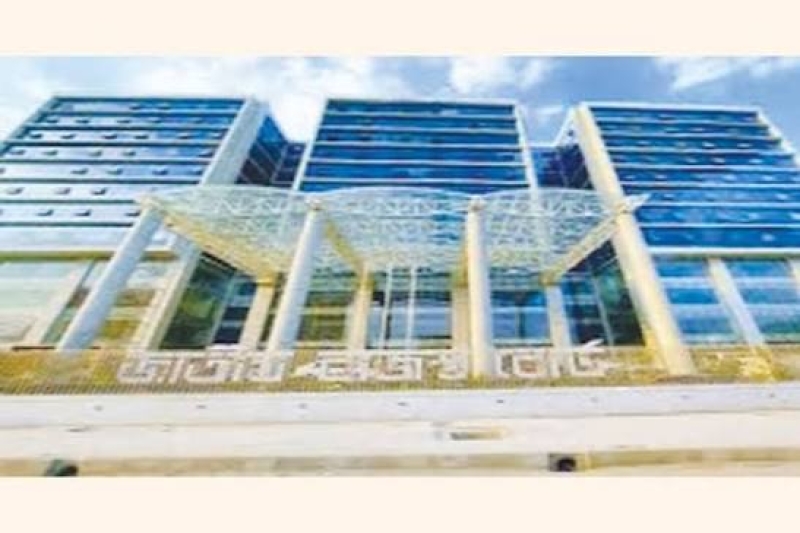- IAEA Chief Calls for Renewed Commitment to Non-Proliferation |
- UN Aid Chief Warns Humanitarian Work Faces Collapse |
- Arab-Islamic Summit yields limited action over Israeli strike on Doha |
- National Consensus Commission term extended till October 15 |
- EU Helping BD prepare for free, fair elections: Envoy Miller |
NBR Unveils 10-Year Plan to Boost Revenue Collection

The National Board of Revenue (NBR) has stressed the need for sustained reforms and strengthened institutional capacity to boost Bangladesh’s domestic revenue mobilisation (DRM) even as the country has achieved notable progress through comprehensive tax reforms.
These observations came in the Medium- and Long-Term Revenue Strategy (MLTRS) FY2025-26 to FY2034-35, unveiled by the NBR recently to guide fiscal reforms over the next decade.
The strategy noted that while Bangladesh has expanded its revenue base significantly further efforts are essential to support the nation’s goal of achieving upper middle-income status by 2031.
The reforms have covered the entire tax architecture, including customs, VAT, and income tax and continuous efforts are needed to enhance regulatory, institutional, human, and voluntary compliance capacities, the strategy said.
In the income tax wing, the Government introduced the Income Tax Act 2023, replacing the decades-old ordinance of 1984.
The new Act incorporates global best practices to simplify return submission and curb evasion.
NBR has also expanded its operational footprint, adding 10 new tax zones, three specialised units — the Income Tax Intelligence and Investigation Unit, the e-Tax Management Unit, and the Withholding Tax Management Unit — along with 220 new circles and 40 range offices to bring more taxpayers under the net and strengthen compliance.
Despite these reforms, income tax remains the weakest link in Bangladesh’s tax system, contributing only 2.58 percent of GDP in FY2021-22, according to Finance Division data.
Although the per capita income has more than doubled in the last decade income tax collection has grown only marginally.
To close the gap, NBR is accelerating automation, including an online return filing system, e-TDS filing for corporates, online tax payments through bank cards and mobile banking, and verification of audit reports through the Document Verification System (DVS).
Tax records, arrears, litigation cases, and registers are now managed digitally via the Office Management System (OMS) while real-time tax collection can be tracked through the Automated Challan System (ACS).
On the customs side, the Customs Act 2023 has replaced the outdated 1969 legislation, introducing a modern legal framework to streamline trade, strengthen compliance, and align with international customs standards.
Central to this effort is the National Single Window (NSW), scheduled for completion by 2026, which will integrate multiple government agencies on a single platform for trade-related documentation.
The initiative is expected to improve clearance efficiency, reduce business costs, and enhance transparency.
Since 2019, NBR has also automated bonded warehouse management to address revenue leakages in export-oriented industries.
Other automation tools include e-Advance Ruling, e-Appeal, e-Auction, and a Detained Goods Management System.
To manage rising trade volumes, NBR has set up a Customs Risk Management Commissionerate and is developing an Automated Risk Management System (ARMS) to better monitor high-risk consignments, including e-commerce shipments.
The Customs Strategic Plan (2024–2028) includes structured career development for officials, domain-specific training on trade policy, data analytics, and risk management, and investment in infrastructure such as a modern Customs, Excise and VAT Training Academy with an e-learning platform.
The VAT wing, meanwhile, is tackling long-standing challenges linked to multiple rates, cascading effects, and rebate complexities that increase effective VAT burdens.
To improve accountability, NBR has been conducting VAT expenditure analysis since 2023, with annual publications planned.
NBR is also reviewing VAT exemptions and Statutory Regulatory Orders (SROs) to expand the base. The Integrated VAT Administration System (IVAS), operational since 2015, is being upgraded and linked with company accounting systems to curb evasion by large firms.
The introduction of Electronic Fiscal Devices (EFDs) and the Sales Data Centre (SDC) in 2020 has expanded transparency in the retail sector. In addition, NBR is pushing e-invoicing in select industries, improving online return systems, and hosting awareness programmes such as VAT Day and VAT Week to promote voluntary compliance.
The NBR strategy also stresses better fiscal management of tax expenditures with annual reports estimating forgone revenues since FY2020-21.
By institutionalising expenditure tracking, the government aims to improve decision-making and reduce leakages.
The revenue authority said its strategy not only aims to raise collections but also to foster transparency, strengthen taxpayer services and build a more robust institutional framework to meet Bangladesh’s development goals, reports UNB.

